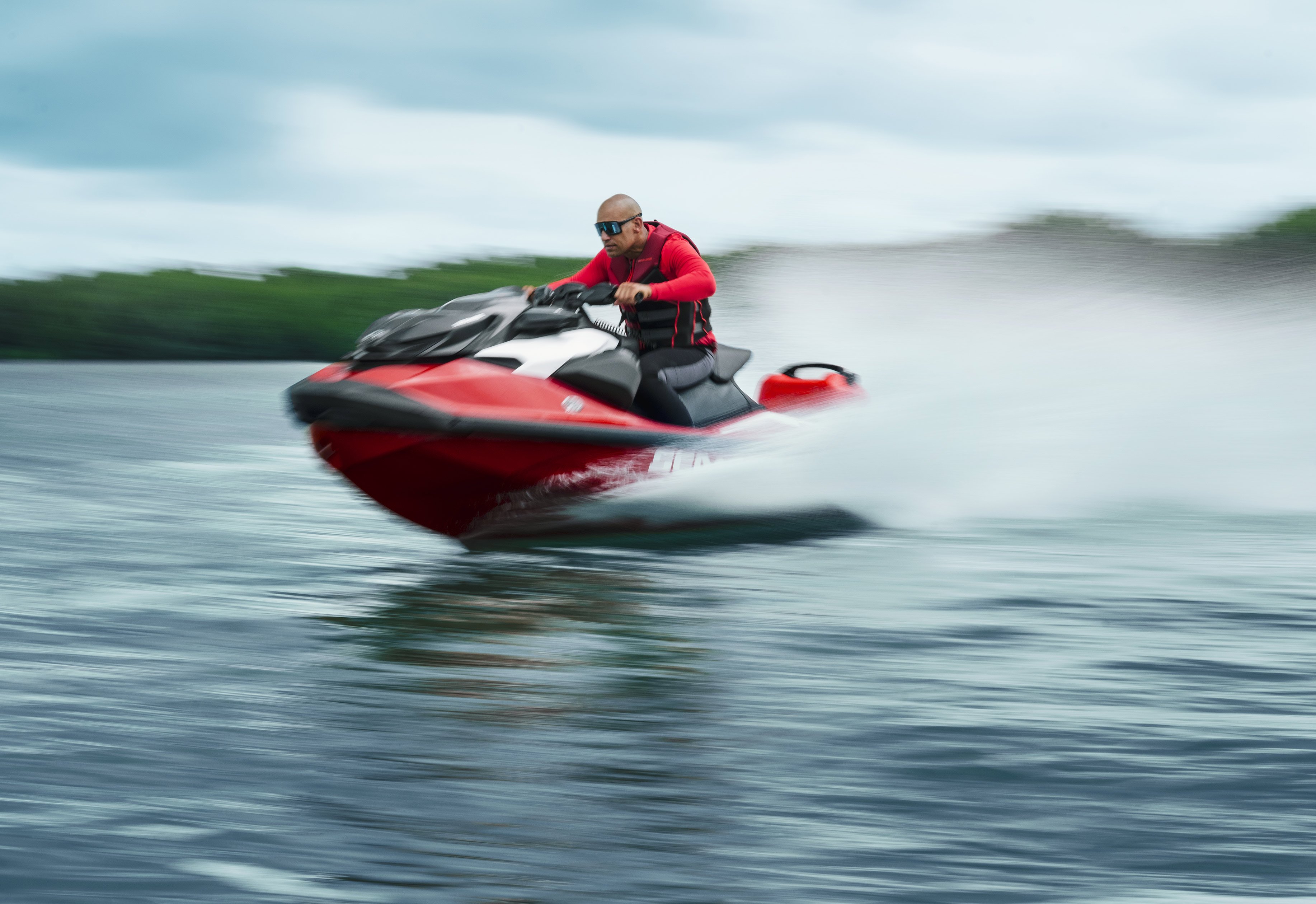
Spritzes from central Florida’s St. John’s river told me that I wasn’t technically airborne, but the sensation felt less like floating and more like gliding. Not in the graceful way the surrounding egrets were conducting methodical flyovers in search of fish—my knuckles were white and my heart was pounding. Though the Sea-Doo RXP-X 325’s ride was devoid of any bucks or vertical movement, its straight-line speed still squeezed my adrenal gland as unimpeded airflow temporarily disfigured my face.
The experience triggered a strong childhood memory of a 2000s-eraTop Gear episode, in which always-spirited host Jeremy Clarkson helmed an Ariel Atom. The open-wheel, open-top (but somehow street-legal) roadster impressed the blunt British gearhead, who summed up the vehicle’s particular brand of speed with an all-time quote. “It’s so quick, it can destroy your entire face,” Clarkson said, his cheeks undulating under gale-force winds.
I didn’t remember more details until I re-watched the segment on YouTube. Clarkson breathlessly reveled in the almost unrivaled horsepower-to-weight ratio, batshit zero-to-60-mph time, g-force-producing grip, and superlative performance—the Atom would eventually take the top spot on the motoring program’s power-lap board, besting even seminal hypercars like the Ferrari Enzo and Koenigsegg CCX. Disregarding theTop Gear appearance, all of the above attributes coincidentally belong to the Sea-Doo RXP-X 325.
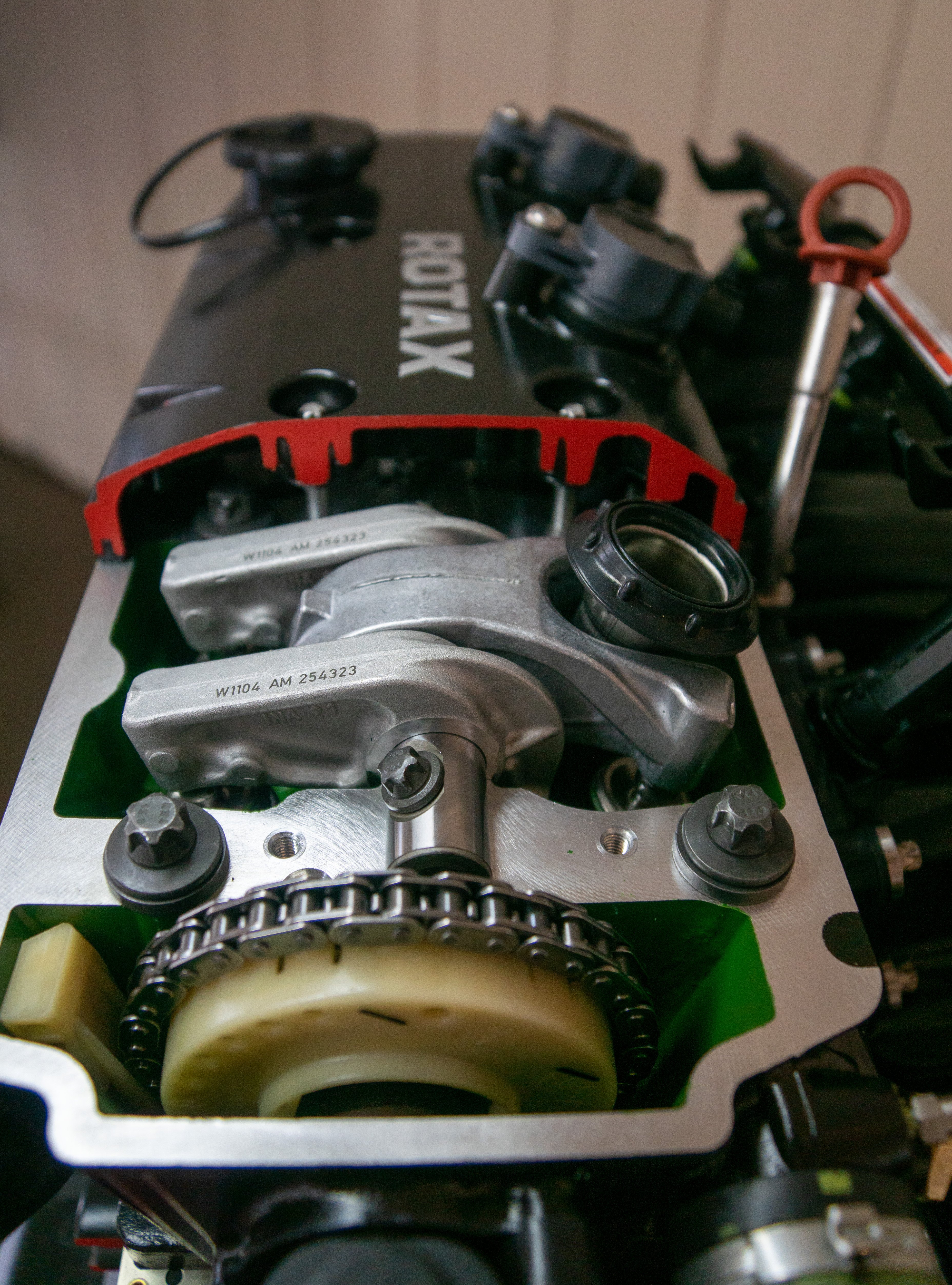
Sea-Doo’s flagship jet ski is the industry’s horsepower king. As RideApart points out, Sea-Doo’s engineers redesigned its proven 1.6-liter supercharged three-cylinder to bump up output from 300 hp to 325 horses, presumably so the RXP-X could steal the “most-powerful” crown from 310-hp Kawasaki Jet Ski Ultra 310XL. This figure and feat were achieved by improving the air intake system, upgrading the planetary gearbox’s components, and, most importantly, equipping a new supercharger that spools up to 100,000 rpm. That extra juice helps the RXP-X 325 achieve another industry record: It’s also the world’s fastest production jet ski, with a 0-62-mph time of 3.4 seconds.
I’d been in cars and on motorcycles capable of that sort of acceleration, but my jet-ski experience was nonexistent, save for one hour-long ride on a rental off the coast of Cancun. Even so, when I first sat in the RXP-X’s narrow, race-inspired Ergolock R seat and clutched its low-profile handlebars, I thought “This will probably be like some sort of seafaring crotch rocket.” Incorrect.
Before I fired up the three-cylinder, my accompanying Sea-Doo rep told me to give the the infotainment a try. Using the 7.8-inch touchscreen I completed a standard Bluetooth pairing process and quickly understood why my guide made this suggestion: the powerful pair of 50-watt speakers built into the fairing below each handlebar beamed music with impressive clarity.
You won’t find an audio system on any sport bike, let alone an analogously capable motorcycle like a Ducati Panigale V4. More importantly, the fact that I—effectively a jet-ski virgin—was encouraged to crank up the tunes before even turning over the world’s most powerful jet ski engine speaks directly to what makes the RXP-X really special, especially when compared to other flagship performance vehicles: the learning curve is nearly non-existent.
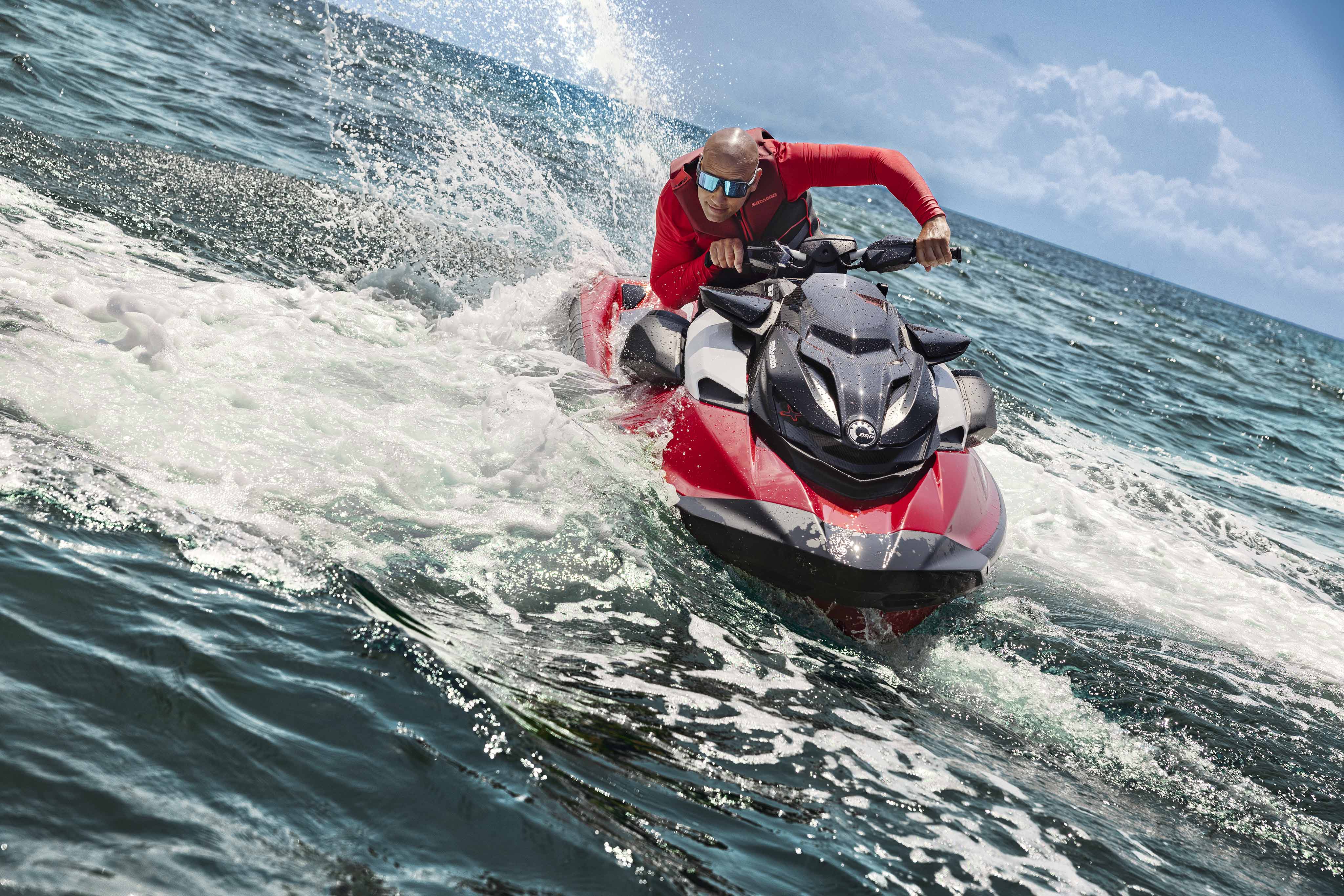
A thorough rundown of the controls took my Sea-Doo guy only a matter of minutes to explain. Throttle is engaged with a lever on the right handlebar—I was reminded that all jet skis require gas to turn. The lever on the left handlebar controls the Intelligent Brake and Reverse system (iBR)—grab this lever to slow down, and, once stopped, continue depressing the lever to back up. First introduced in 2008, Sea-Doo’s iBR marked the first time a jet-ski had been equipped with a brake, which cut stopping distance in half—the innovation even earned the brand an award from the United States Coast Guard. What’s more, iBR also gave riders the ability to reverse without letting go of the handlebars for the first time.
And that was all I needed to know before riding the world’s fastest and most powerful production jet ski. Granted, my first steps were taken in a giant lake without another watercraft in sight, but I think I could have navigated a stream on my maiden voyage without issue. Balance and stability were non-factors, and the throttle delivery was exceedingly easy to get the hang of. To add context: I rode a cruiser motorcycle for an entire year before I tried out my first middle-of-the-road sport bike, and the latter’s comparatively touchy throttle response still required careful input. I reckon you could put a precociously cautious teenager on the RXP-X without worrying about whiskey-throttle.
I practiced slow speed turns and gradual acceleration for about five minutes before I gave it the beans. It felt like 60 mph came in about two seconds and a goofy grin stretched across my face. After another five minutes, I switched from Eco mode to Sport mode, at which point a message flashed on the LCD screen instructing me to advise any would-be passenger to hold on. I went full-throttle again, and this time, the vehicle launched entirely out of the water with the trajectory of an orca’s leap, I shit you not. I actually laughed.
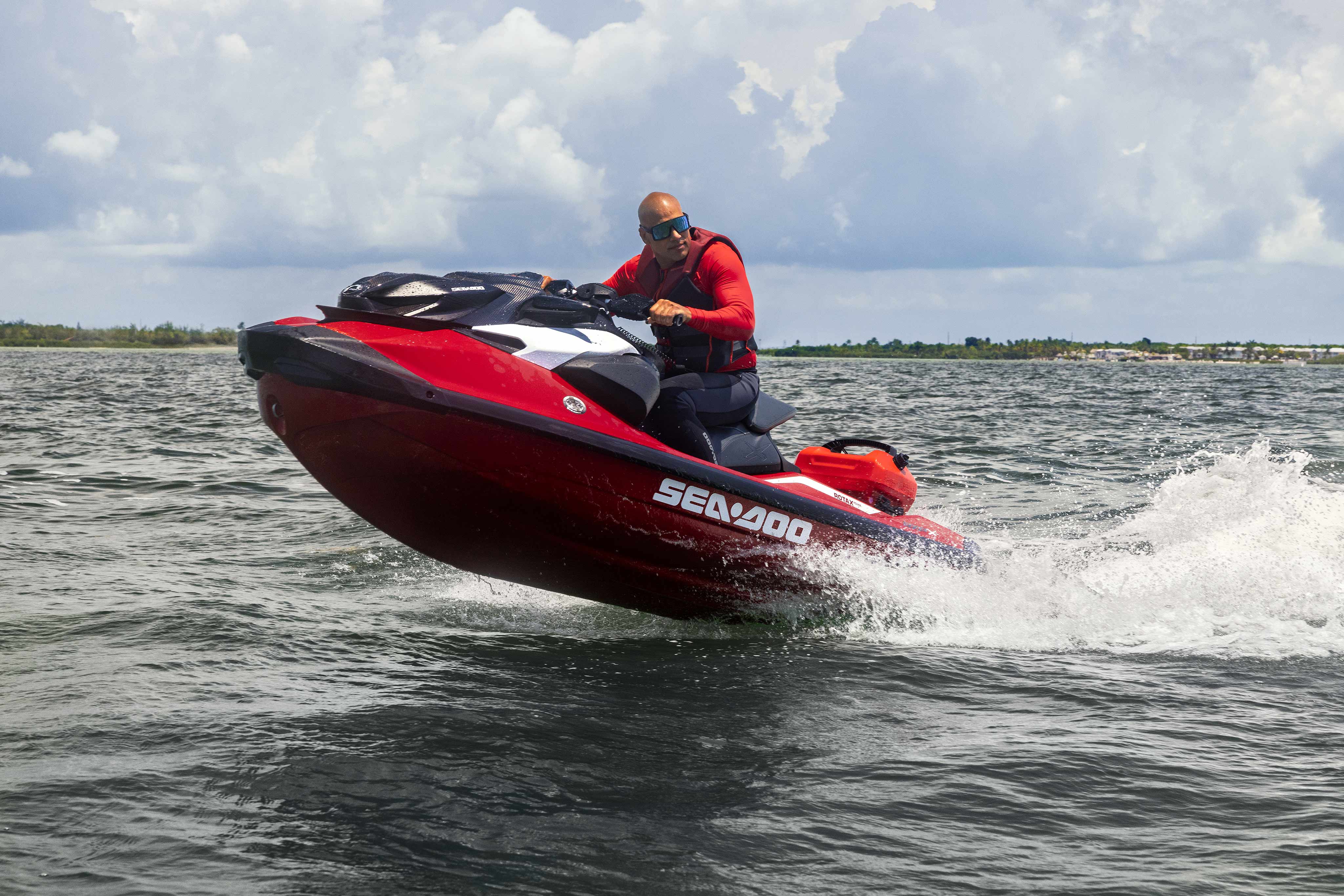
As the Sea-Doo rep and I embarked on a trip up and down the St. John’s river, the grin morphed into perma-smile. Except when forbidden by signage, we were at or near the electronically limited top end for the entire way. As joyfully jarring as it is to launch the RXP-X, the ride felt like a silky smooth glide thanks to the design of the T3-R fiberglass hull, which features a shark gill design at midpoint to increase predictability and an aggressively deep V-shape. At speed, the pointed bottom of this V shape is the only part of RXP-X that’s in-contact with the water… until you corner, at least.
Most other jet skis have rounder hulls that skim across the water’s surface while cornering. The RXP-X’s T3-R hull does the opposite: It cuts into the water hard and refuses to deviate from the direction in which the handlebars are pointed. Riders are required squeeze their legs into the molded, side-mounted kneepads and hold on for dear life, lest g-forces cause them to take flight. I’d felt this exactly once before on the three-wheeled Can-Am Spyder (quite a coincidence, considering both Sea-Doo and Can-Am are owned by Canada’s Bombardier Recreational Products).
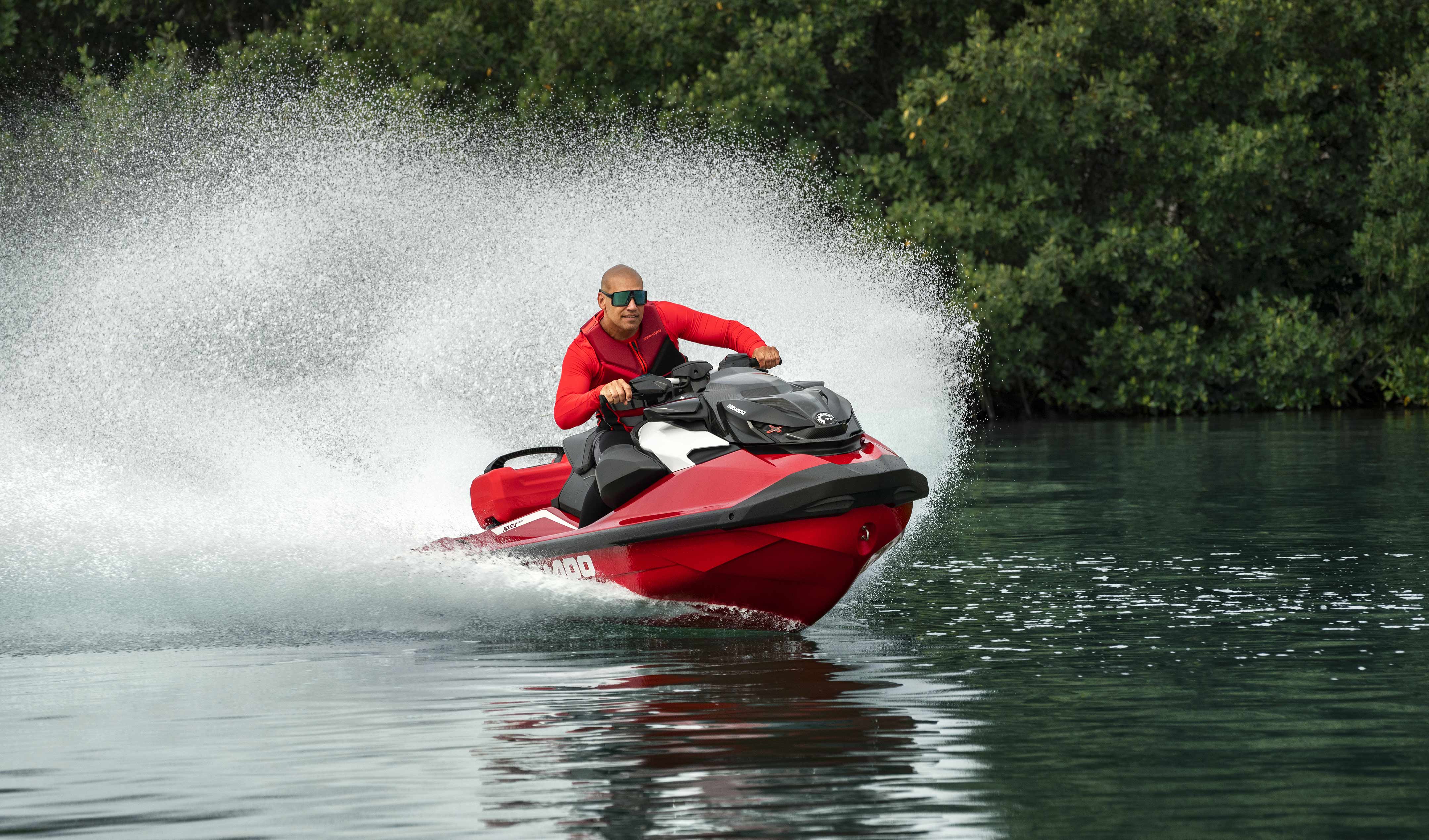
I previously described the “intensely thrilling sensation that something is trying to pull your body in the opposite direction while turning.” Well, on the RXP-X, that sensation is considerably more intense—the trike will break traction, the jet ski will toss the rider well before the hull gives out. I don’t think I’ve experienced quite so much lateral g-force in my life. The last thing I did on the RXP-X was “test” this cornering ability by doing donuts until my hip cramped.
No reasonable person would put a new driver into the cockpit of a world-beating hypercar. And before a new rider tests out a 600-cc sport bike, they’d better have at least a couple thousand miles in the saddle of something tamer and, preferably, a certificate from a safety course. Meanwhile, I rode the RXP-X like a maniac for 50 miles top speed without incident. If there’s another top-performing vehicle that a plebe can handle, please drop me a line so I can come drive it. From $19,499















